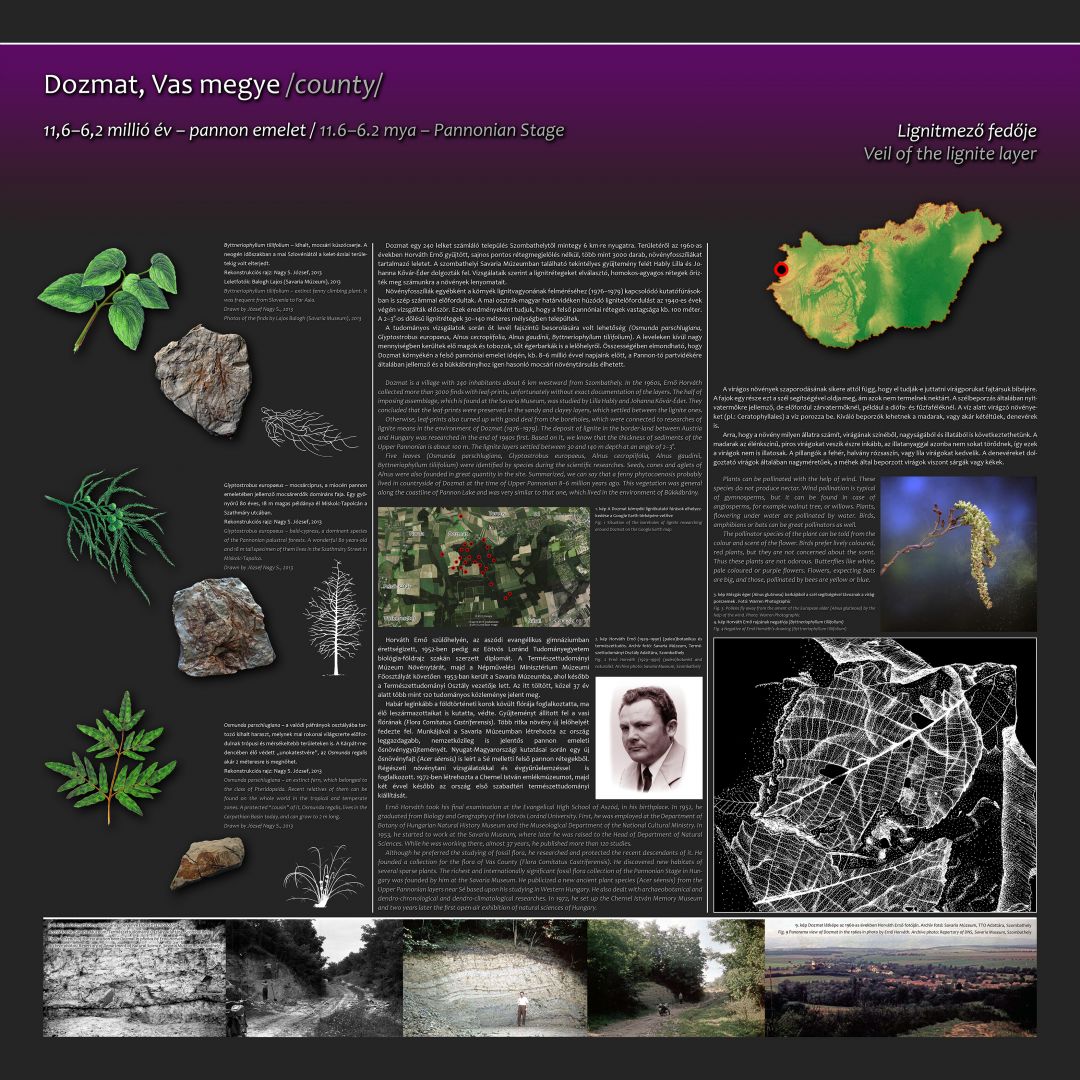FLORA OF THE NEOGENE - 2. view
Dozmat, Vas megye /county/
11.6–6.2 mya – Pannonian Stage
Dozmat is a village with 240 inhabitants about 6 km westward from Szombathely. In the 1960s, Ernő Horváth collected more than 3000 finds with leaf-prints, unfortunately without exact documentation of the layers. The half of imposing assemblage, which is found at the Savaria Museum, was studied by Lilla Hably and Johanna Kővár-Éder. They concluded that the leaf-prints were preserved in the sandy and clayey layers, which settled between the lignite ones.
Otherwise, leaf-prints also turned up with good deal from the boreholes, which were connected to researches of lignite means in the environment of Dozmat (1976–1979). The deposit of lignite in the border-land between Austria and Hungary was researched in the end of 1940s first. Based on it, we know that the thickness of sediments of the Upper Pannonian is about 100 m. The lignite layers settled between 30 and 140 m depth at an angle of 2–3°.
Five leaves (Osmunda parschlugiana, Glyptostrobus europaeus, Alnus cecropiifolia, Alnus gaudinii, Byttneriophyllum tiliifolium) were identified by species during the scientific researches. Seeds, cones and aglets of Alnus were also founded in great quantity in the site. Summarized, we can say that a fenny phytocoenosis probably lived in countryside of Dozmat at the time of Upper Pannonian 8–6 million years ago. This vegetation was general along the coastline of Pannon Lake and was very similar to that one, which lived in the environment of Bükkábrány.
Ernő Horváth took his final examination at the Evangelical High School of Aszód, in his birthplace. In 1952, he graduated from Biology and Geography of the Eötvös Loránd University. First, he was employed at the Department of Botany of Hungarian Natural History Museum and the Museological Department of the National Cultural Ministry. In 1953, he started to work at the Savaria Museum, where later he was raised to the Head of Department of Natural Sciences. While he was working there, almost 37 years, he published more than 120 studies.
Although he preferred the studying of fossil flora, he researched and protected the recent descendants of it. He founded a collection for the flora of Vas County (Flora Comitatus Castriferensis). He discovered new habitats of several sparse plants. The richest and internationally significant fossil flora collection of the Pannonian Stage in Hungary was founded by him at the Savaria Museum. He publicized a new ancient plant species (Acer séensis) from the Upper Pannonian layers near Sé based upon his studying in Western Hungary. He also dealt with archaeobotanical and dendro-chronological and dendro-climatological researches. In 1972, he set up the Chernel István Memory Museum and two years later the first open-air exhibition of natural sciences of Hungary.
